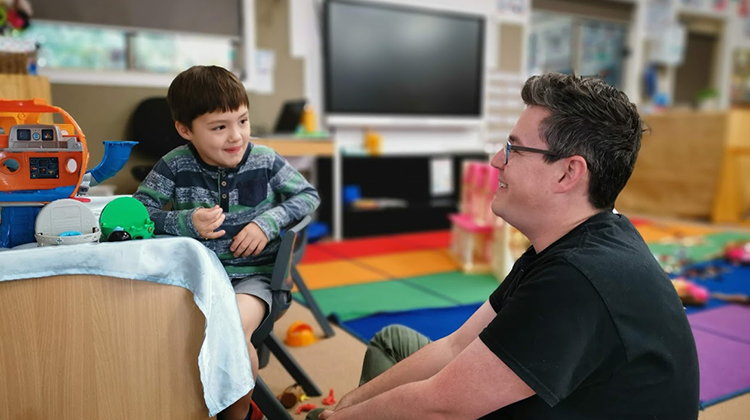How schools can leverage online health during COVID-19

There’s no denying it, this year has been tough for all of us. The events of 2020 have devastated lives, families, the economy, and have radically changed the way we work and live.
At the beginning of March, schools were operating as normal. By the end of the month, teachers and students were in lockdown, scrambling to learn how to transfer their lives online. But teachers are a resilient mob, and by the end of the month, lessons were online, and there was at least some vague sense of hope that we could cope with this new way of life while we had to do so.
How COVID-19 accelerated adoption of online health
At Umbo, we were lucky enough to have a bit of a head start. We launched back in 2018, seeking to help kids in rural and remote Australia to gain access to speech pathology and occupational therapy services online. We didn’t understand at that time just how relevant online allied health services would become.
As kids began to learn from home, many teachers and parents began to turn their minds to how we could continue to support kids in need of speech pathology and occupational therapy services. Where many people had been unaware of the possibility of therapy online, or where people had been hesitant at trying something new, we saw a 1000% increase in referrals almost overnight.
Overcoming misconceptions around online health
Despite the willingness of many to adopt this new approach to therapy, there are still many misconceptions about what it actually is and how it works. The fact is that the same things that are important in-person are important online – a good local support network, a healthy rapport with the client and their supporters, and evidence-based therapies.
Probably the most widely reported misconceptions I’ve heard about online therapy are, “You can’t build a good relationship with people online” and, “It doesn’t work for my person because they’re too complex”. In fact, the literature, my PhD research, and my experience have taught me that neither is true. The quality of the relationship and the success of the therapy are based almost exclusively in gathering and maintaining a healthy support network around the client, and to coach the group in how to deliver strategies in real life contexts. To paraphrase one of my educator colleagues: “We needed support and guidance more than 1:1 therapy. (Student)’s communication partners needed to be upskilled, and in that respect, it was really valuable, and just as effective as in-person therapy.”
The opportunity for schools to access health services with ease and speed
We have a wide range of clients at Umbo with a wide range of abilities, so we take a different approach in each case. For some with minor fine motor, speech, and language difficulties, it’s often sufficient to conduct a 1:1 video call to practice learning and mastering new skills. It’s the “traditional” approach and can be effective in some cases. For these clients, the transition was easy, and we had support from schools since students were availed of hardware and software that they had been using already with their classroom teachers to learn online.
For other clients with profound and multiple disabilities, we continued to coach educators in various different communication or occupational strategies which they could use directly with that student either online, or when they returned to school. Educators saw this as incredibly valuable, since these techniques were often applicable to many other students as well. It was an exercise in capacity-building.
Teachers very much enjoyed being involved more in the therapeutic process, and saw this as an important element of therapy going forward. Having staff trained and ready to support diverse communicators and people with different disabilities from the get-go is something that leadership teams identified as crucial for optimum learning in the future. This is in fact what the science is telling us - that we need to start upskilling the people who are closest to the client, interacting with them in their natural environments.
Online health is a game-changer for schools, providing the opportunity to cut down the average waiting time for therapy from 18 months for an in-person service to closer to 18 days. Being able to access clinicians all over the country gives educators and families the option to be supported in a timely, evidence-based manner, whether we’re locked up in our homes or not.